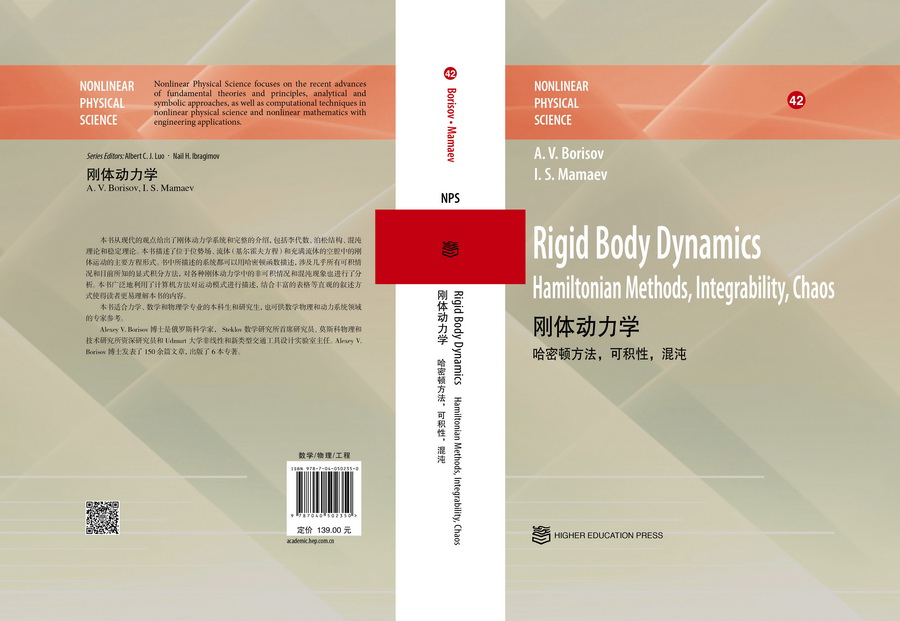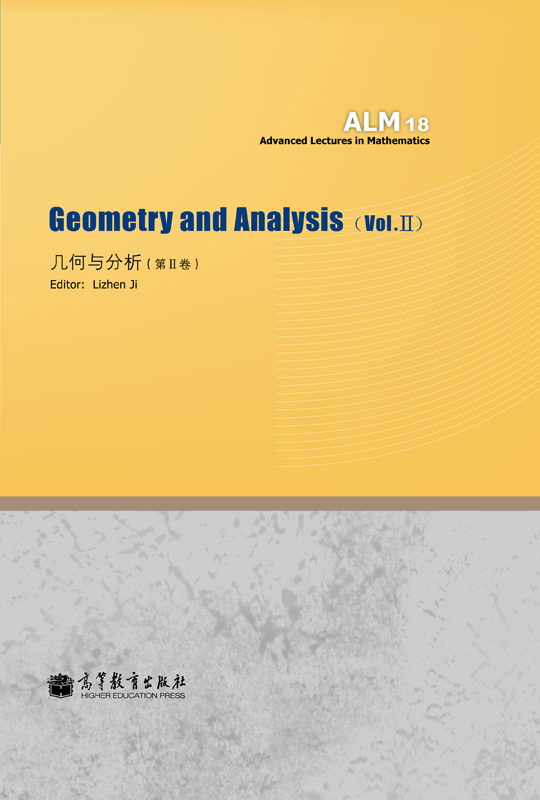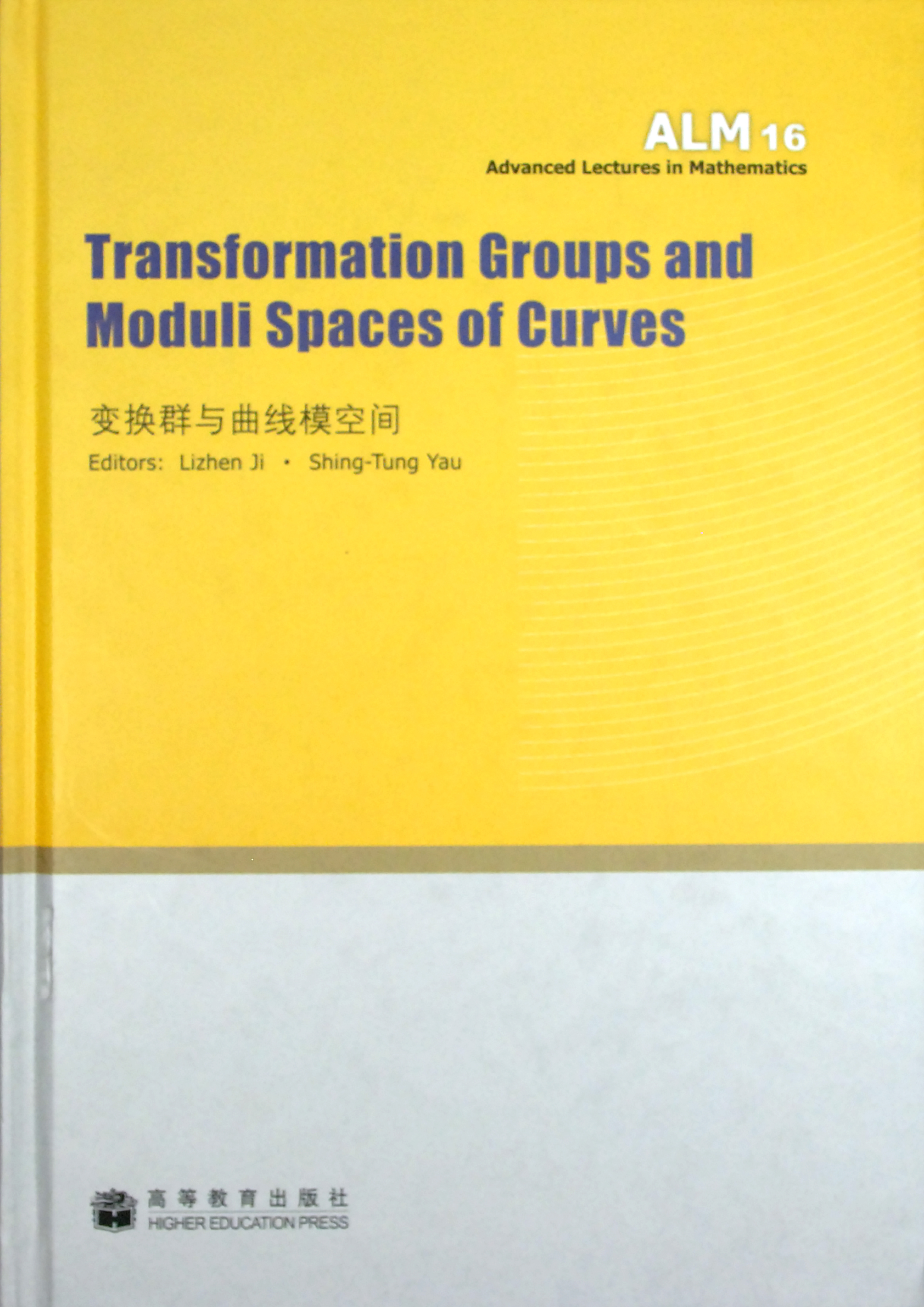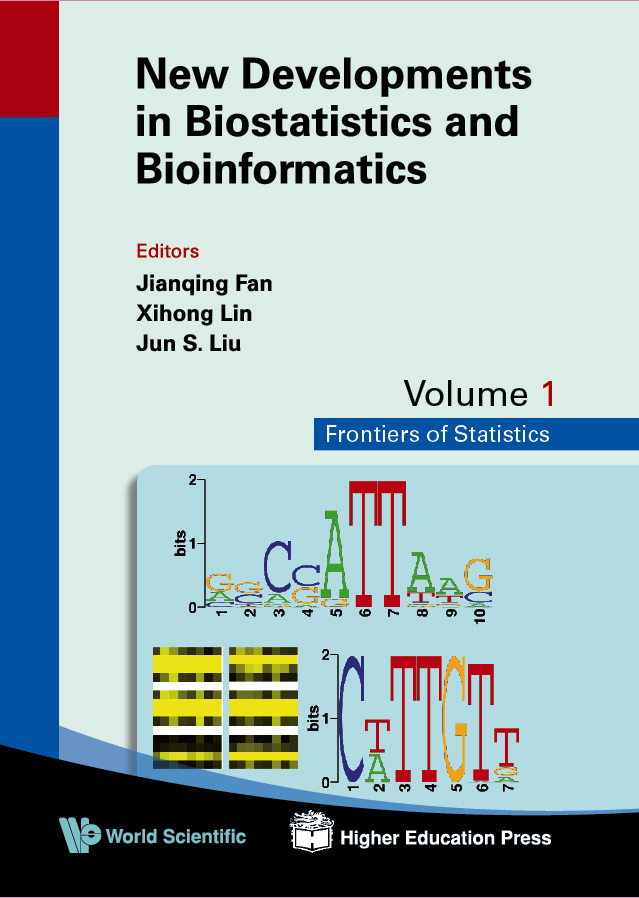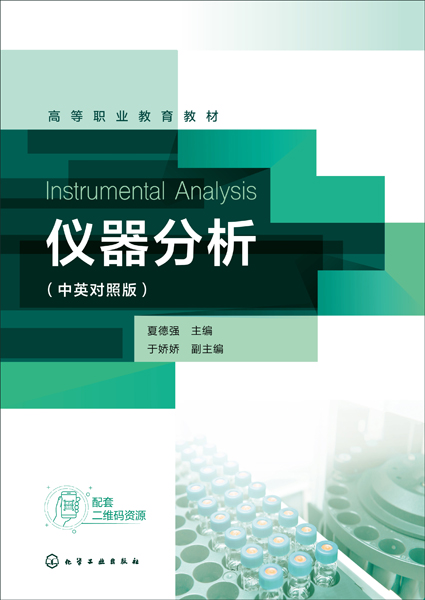刚体动力学(英文版)
作者: A.V.Borisov,I.S.Mamaev
出版时间:2018-08
出版社:高等教育出版社
- 高等教育出版社
- 9787040502350
- 1版
- 227562
- 48265980-2
- 精装
- 16开
- 2018-08
- 740
- 581
- 理学
- 数学类
- O313.3-49
- 数学类
- 研究生及以上
Introduction 1
The Creators of Rigid Body Dynamics 11 Euler, Leonard (11). Lagrange, Joseph Louis (11). Poinsot, Louis (12). Kirchhoff, Gustav Robert (13). Clebsch, Rudolph Friedrich Alfred (13). Zhukovskii, Nikolai Egorovich (13). Kovalevskaya, Sof’ya Vasil’evna (14). Poincaré, Henry Jules (15). Lyapunov, Aleksandr Mikhailovich (15). Steklov, Vladimir Andreevich (16). Chaplygin, Sergei Alekseevich (16). Goryachev, Dmitrii Nikanorovich (17). Kozlov, ValeriiVasil’evich (17).
1 Rigid Body Equations of Motion and Their Integration
1.1 Poisson Brackets and Hamiltonian Formalism
1 Poisson manifolds
Poisson brackets and their properties (19). Nondegenerate brackets. Symplectic structures (22). Symplectic foliations. Generalized Darboux theorem (22)
2 The Lie – Poisson bracket
1.2 Poincaré and Poincaré – Chetaev Equations
1 Poincaré Equations
2 Poincaré – Chetaev equations
3 Equations on Lie groups
4 Comments
1.3 Various Systems of Variables in Rigid Body Dynamics
1 Euler angles
2 Euler variables. Components of momentum and the direction cosines
3 Quaternion Rodrigues – Hamilton parameters
4 Andoyer variables
5 Comments
1.4 Different Forms of Equations of Motion
1 Equations of motion of a rigid body with a fixed point
Euler – Poincaré equations in the group SO(3) (39). Equations of motion in angular velocities and quaternions (41). Kinetic energy of a rigid body with a fixed point (41)
2 Hamiltonian form of equations of motion for different systems of variables
Equations of motion in algebraic form (42). Quaternion representation of the equations of motion (44). Canonical equations in Euler angles and Andoyer variables (44)
3 Poincaré section and chaotic motions
1.5 Equations of Motion of a Rigid Body in Euclidean Space
1 Lagrangian formalism and Poincaré equations on the group E(3)
2 Kinetic energy of a rigid body in R3
3 Hamiltonian form of equations of motion of a rigid body in R3
1.6 Examples and Similar Problems
1 Motion of a rigid body with a fixed point in a superposition of constant uniform force fields
2 A free rigid body in a quadratic potential
3 Motion of a rigid body with a fixed point in a rotating coordinate system
Gyroscope and Foucault pendulum (56). A satellite on a circular earth orbit (56)
4 Relative motion of a rigid body with a fixed point
5 Motion of a rigid body sliding on a smooth plane
6 Gyroscope in the Cardan suspension
7 Motion of a rigid body in an ideal incompressible fluid and the Kirchhoff equations
8 Falling rigid body in an ideal fluid
9 The Levitron
1.7 Theorems on Integrability and Methods of Integration
1 Hamiltonian systems. The Liouville – Arnold theorem
2 Theory of the last multiplier. Euler – Jacobi theorem
3 Separation of variables. Hamilton – Jacobi method
Geodesic flow on the ellipsoid (Jacobi problem) (73). System with quadratic potential on a sphere (Neumann problem) (74)
2 The Euler – Poisson Equations and Their Generalizations
2.1 Euler – Poisson Equations and Integrable Cases
1 A rigid body with a fixed point
2 Hess equations
3 The Kirchhoff analogy for an elastic rod
4 Integrable cases
5 Absolute motion
Fixed points on the Poisson sphere (86). Periodic solutions on the Poisson sphere (86). Special classes of motion (86). Absolute motion:integrable and nonintegrable cases (87)
2.2 The Euler Case
1 Geometric – interpretation of Poinsot
2 Explicit integration and bifurcation analysis
Motion in the inertial frame (92). Herpolhode (93)
3 Comments
2.3 The Lagrange Case
Reduction to a system with one degree of freedom (97). Dynamics of the system (98)
1 Bifurcation diagram and geometric analysis of motion
2 Reduced systems (in ψ and φ)
3 Bi-Hamiltonian property
4 Historical comments
2.4 The Kovalevskaya Case
1 Explicit integration. The Kovalevskaya variables
2 Bifurcation diagram and the Appelrot classes
I. The Delone solution [148] (109). II. (112). III. (113). IV. (115). The Bobylev – Steklov solution (115)
3 Phase portrait and visualization of the most remarkable solutions
Phase portrait for c = 0 (117). Phase portrait for c = 1:15 (118). The Delone solution (k2 = 0) (118). The Bobylev – Steklov solution (120)
Unstable periodic solutions and separatrices (123)
4 Historical comments
The method of Kovalevskaya. (125). The Kovalevskaya case, its analysis and generalizations (126)
2.5 The Goryachev – Chaplygin Case
1 Explicit integration
2 The bifurcation diagram and the phase portrait
3 Visualization of the most remarkable solutions
The Goryachev solution [237] (130). Stable and unstable periodic solutions(133)
2.6 Partial Solutions of the Euler – Poisson Equations
1 The Hess solution
2 Permanent Staude rotations
3 Topological types of three-dimensional isoenergetic manifolds in the case when the center of mass lies in a principal plane
4 Stability of Staude rotations
5 Regular Grioli precessions
6 The Bobylev – Steklov solution (1896)
7 Steklov’s solution (1899)
8 Goryachev’s solution (1899)
9 Chaplygin’s solution (1904)
10 Kowalewski’s solution (1908)
2.7 Equations of Motion of a Heavy Gyrostat
1 A gyrostat
2 The Zhukovskii – Volterra case
Separation of variables in the Zhukovskii –Volterra case (162). The explicit Volterra solution (163)
3 Explicit solutions in the other cases
2.8 Systems of Linked Rigid Bodies, a Rotator
Two linked tops (165). A body with a rotator (166). Comment (168). The Liouville equations (169)
3 The Kirchhoff Equations and Related Problems of Rigid Body Dynamics
3.1 Kirchhoff Equations
1 Equations of motion and physical interpretations
Dynamics of a rigid body in a fluid (171)
2 Integrable cases
3 The case of axial symmetry
4 Clebsch case
5 Steklov – Lyapunov family
6 Chaplygin case (I)
7 Chaplygin case (II)
8 Sokolov case
9 Sokolov –Tsiganov case
10 Integrable generalizations with linear terms in the Hamiltonian
Equations of motion of a multiply connected body (187). Rubanovskii generalization of the Steklov – Lyapunov integrable family (187)
Generalization of the Chaplygin case (I) (188). Generalization of the Sokolov case (189). Generalization of the Sokolov –Tsiganov case (189). Steklov particular solutions (190)
11 On the Kharlamov equations
12 Generalization of Liouville equations. The problem of self-propulsion and the “falling cat”
Self-propulsion (192). Falling cat problem (194)
3.2 Poincaré – Zhukovskii Equations
1 Equations of motions and physical interpretations
Poisson structure and equations of motion (195). Poincaré – Zhukovskii equations (196). Dynamics of a rigid body with a cavity containing a fluid (198). Rigid body dynamics in R4. Four-dimensional Euler top (199). Rigid body in curved space (200). Rigid body in S3 and in a fluid (200). System of interacting spins (201)
2 Integrability cases
3 The case of axial symmetry (H. Poincaré)
4 Schottky – Manakov case
5 Steklov case
6 An integrable case with a fourth-degree integral (ler and P. van Moerbeke)
7 Borisov – Mamaev – Sokolov case
8 Tsiganov – Sokolov case
9 Bogoyavlenskii particular case for (M, p) = 0
Bogoyavlenskii “first” case (212)
10 Generalization of the Hess case
11 Integrable generalizations with linear terms in the Hamiltonian
Analog of the Rubanovskii case on so(4) (214). Generalization of the Bogoyavlenskii case (214)
3.3 A Remarkable Limit Case of the Poincaré – Zhukovskii Equations. A Countable Family of First Integrals
3.4 Rigid Body in an Arbitrary Potential Field
1 Generalized Euler – Poisson equations
Euler case (224). Generalized Lagrange case (224). Generalized Kovalevskaya case (224). Generalization of the Delone case (1st Appelrot class) (225). Generalization of the 2nd and 3rd Appelrot classes (Kharlamov case) (226). Generalized spherical top (227). Analog of the Hess case (228)
2 The Brun system
Lax representation and first integrals (229). Dynamical symmetry case (231). The Brun problem in a single field (232)
3 Quaternion Euler – Poisson equations
Spherical top (a1 = a2 = a3) (234). Kovalevskaya case (234). Goryachev– Chaplygin case (234)
4 Linear Integrals and Reduction
4.1 Linear Integrals in Rigid Body Dynamics
1 Classical area integral N3 = (M, γ) = c = const
2 Integral N3 −M3 = (M, γ) −M3 = c = const
3 Integral M3 = c = const (Lagrange integral)
4 Reconstruction of integrable systems
Generalization of the Yehia –Kovalevskaya case (244). Generalized Goryachev – Chaplygin family (246)
4.2 Dynamical Symmetry and Lagrange Integral
1 Explicit quadrature for the generalized Lagrange nditions for existence of the integral
2 A top on a smooth plane in a gravitational field
3 A gyroscope in gimbal suspension in an axially-symmetric field
4 Case of axial symmetry in Chaplygin equations
5 An analogy between the Lagrange top and the Leggett system
4.3 Generalizations of the Hess Case
Linear and quadratic potentials (255). Known integrable cases (257). A rigid body on a smooth plane (258). A gyroscope in gimbal suspension (260). The Hess integral in Chaplygin equations (261)
5 Generalizations of Integrability Cases. Explicit Integration
5.1 Various Generalizations of the Kovalevskaya and Goryachev –Chaplygin Cases
1 Generalization of Kovalevskaya’s case
2 Tsiganov – Sokolov case with fourth-degree integral
3 Generalization of the Goryachev – Chaplygin case
4 Three integrable families on so(3, 1)
5 Goryachev case
5.2 Separation of Variables
1 Separating transformations in integrable problems of rigid body dynamics
Zhukovskii –Volterra system (276). The Kovalevskaya case (278). Isomorphism between the Kovalevskaya – (Komarov, Yehia) gyrostat on the pencil Lx and the Clebsch systems on e(3) (281). Kolosov’s analogy and its generalizations (283). Chaplygin case (I) (285). Kharlamov’s case for the generalized Kovalevskaya top (286). Separation of variables for the Goryachev – Chaplygin and Kovalevskaya – Goryachev– Chaplygin tops. (287)
2 Action variables and separating variables
5.3 Algebraic Transformations of Poisson omorphisms and Explicit Integration
1 Group transformations of the pencil
2 Transformations related to symplectic Andoyer variables
3 Orbit isomorphism for algebras e(3) and so(3, 1)
4 A transformation related to the Euler angles
5 A transformation for explicit integration of the Steklov – Lyapunov case
5.4 Doubly Asymptotic Motions for Integrable Systems
Euler case (299). Lagrange case (300). Zhukovskii –Volterra case (302)
6 Periodic Solutions, Nonintegrability, and Transition to Chaos
6.1 Nonintegrability of Rigid Body Dynamics Equations. Chaotic Motions
A Survey of Results and Unsolved Problems
1 Nonintegrability of Euler – Poisson equations
Single-valued and meromorphic integrals (304). Algebraic integrals (305)
Real-analytic integrals (306). Numerical studies (314)
2 Nonintegrability of Kirchhoff equations
Real-analytic integrals (317). Branching of solutions. Single-valued and algebraic integrals (318)
3 Related problems of rigid body dynamics
6.2 Periodic and Asymptotic Solutions in Euler – Poisson Equations and Related Problems
1 Various types of partial solutions of the equations of rigid body dynamics
2 Methods for studying mappings
Search for fixed points of a mapping (323). Extension of the fixed points of a mapping with continuous variation of a parameter (324)
3 Bifurcation of fixed points of an area-preserving mapping
6.3 Absolute and Relative Choreographies in Rigid Body Dynamics
1 Birth of Absolute Choreographies for (M, γ) = 0
The Euler – Poinsot case (326). Perturbation of the Euler – Poinsot case (330). Scenarios for the birth of absolute choreographies (333)
2 Genealogy of Choreographies for (M, γ) = 0
Relationship with integrable cases (334). Continuous variation of energy and the relationship with Staude solutions (336). Connection with Steklov solutions (337)
3 More Complicated Choreographies for (M, γ) = 0
4 Relative choreographies
5 Open problems
6.4 Chaotic Motions. Genealogy of Periodic Orbits
Period doubling, cascades, and separatrix splitting (343). Global section. Genealogy of periodic orbits (344). Novikov’s conjecture and periodic solutions on the Poisson sphere (347)
6.5 Chaos Evolution in the Restricted Problem of Heavy Rigid Body Rotation
1 The restricted problem of rigid body dynamics
2 Transition to chaos for c = 0
Splitting of resonant tori. (352). Homoclinic structure of the mapping.(352). Cascades of period doubling bifurcations. (354). The case with c = 0 and h → 0. Adiabatic behavior. (356)
3 Case c ̸= 0
4 Meandering tori
6.6 Adiabatic Chaos in the Liouville Equations
1 Hamiltonian systems with one and a half degrees of freedom. Adiabatic invariant jumps and adiabatic chaos
2 Rigid body dynamics with slowly varying parameters
3 Separatrix splitting and adiabatic chaos conditions
6.7 Falling Heavy Rigid Body in an Ideal Fluid. Probabilistic Effects and Attracting Sets
1 Equations of motion and particular cases
Plane-parallel motion (377). Motion of an axially symmetric body (round disk) (378). An analog of the Hess case (379)
2 Isotropic body motion
3 Qualitative analysis of plane-parallel motion of a balanced body without initial impulse
Stationary (equilibrium) solutions. Small oscillations. Doubly asymptotic solutions (382). Asymptotic behavior of solutions of the Chaplygin equation (383). Numerical analysis (385). Body trajectory (386)
4 Plane-parallel motion for P1 ̸= 0
5 A body with three symmetry planes
Equilibrium solutions and normal oscillations (391). Asymptotic behavior of solutions (391). Computer analysis (393)
6 Falling body with screw symmetry. Steklov solutions and their stability
Linear stability of Steklov solutions (398). On Lyapunov stability (403)
A Derivation of the Kirchhoff, Poincaré – Zhukovskii, and Four-Dimensional Top Equations
1 Rigid body motion in an ideal incompressible fluid
Kirchhoff equations (407). Equations of motion for a multiply connected body (410)
2 Poincaré – Zhukovskii equations
3 Motion of a rigid body with a gyrostat in curved space –stationary motions
Free body motion in S3 (418). Motion of two linked bodies. A balanced gyrostat (420). Kirchhoff equations on S3 and L3 (422). Free body motion in Lobachevskii space (423)
B The Lie Algebra e(4) and Its Orbits
C Quaternion Equations and L-A Pair for the Generalized Goryachev – Chaplygin Top
D The Hess Case and Quantization of the Rotation Number
1 Equations of motion and conservation laws
2 Bifurcation diagram
3 Zero level set of the area integral
4 The rotation number and limit cycles
5 Generalization of the Hess case
E Ferromagnetic Dynamics in a Magnetic Field
F The Landau – Lifshitz Equation, Discrete Systems, and the Neumann Problem
1 Landau – Lifshitz Equation
2 Anisotropic XYZ Heisenberg Model
Higher-dimensional generalizations (458)
3 Ellipsoidal billiards and discrete tops
G Dynamics of Tops and Material Points on Spheres and Ellipsoids
1 Point motion on the sphere and ellipsoid (n = 2, 3). An analogy with top dynamics
Two-dimensional ellipsoid and sphere (E2; S2) (461). Three-dimensional ellipsoid and sphere (E3; S3) (463)
2 Harmonic oscillator on S2 and S3. A generalization of the Neumann and Jacobi problems
Hooke centers on the sphere (464). Generalization of Neumann problem on S2 (466). Generalization of the Jacobi problem on E2 (467)
Generalization of the Neumann system to S3 (467). Rational separable potentials (468)
3 The problem of n Hooke centers on a sphere
4 Gaffet system
H On the Motion of a Heavy Rigid Body in an Ideal Fluid with Circulation
1 Introduction and a survey of known results
2 General equations of motion. Lagrangian and Hamiltonian descriptions
3 Motion in a gravitational field
4 Integrable cases
5 The Chaplygin case. Bifurcation analysis
6 Perturbation of the Chaplygin case. Separatrix splitting
I The Hamiltonian Dynamics of Self-gravitating Fluid and Gas Ellipsoids
I.1 Dynamics of a Self-gravitating Fluid Ellipsoid
1 Introduction
2 The Dirichlet and Riemann Equations
The Dirichlet Equations (490). The Riemann Equations (491). Gravitational potential (493). The Roche Problem (494)
3 First Integrals
Vorticity (496). Momentum (496). Energy (497)
4 Lagrangian and Hamiltonian formalism
Symmetry Group and the Dedekind Reciprocity Law (499). Hamiltonian Formalism and Symmetry Reduction (500)
5 Particular Cases of motion
Shape-preserving Motions of the Ellipsoid (502). Axisymmetric Case(Dirichlet [160]) (503). Riemannian Case [487] (504). Elliptic Cylinder(Lipschitz [387]) (505)
6 Chaotic oscillations of a Triaxial ellipsoid
I.2 Dynamics of a Gas Cloud with Ellipsoidal Stratification
1 Introduction
2 Equations of motion of a gas cloud with a linear velocity field The Dyson model [177] (515). Model of a cooling gas cloud (Fujimoto[198]) (516). Model of a dust cloud (Gravitational collapse)(517)
3 Lagrangian Formalism, Symmetries, and First Integrals
4 Symmetry Reduction and Hamiltonian Formalism
5 Particular Cases of Motion.521The case = 3 (monoatomic gas) (521). The case of axial symmetry (525). Generalization of the Riemannian case (527)
Bibliography
Glossary
Index


